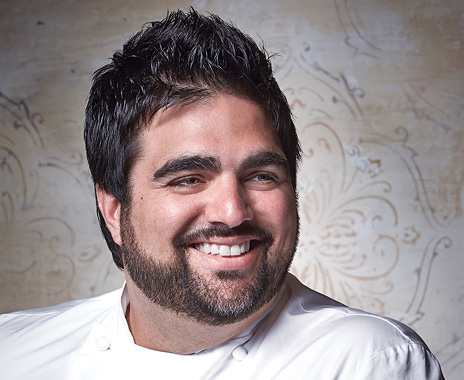Victor Albisu grew up in kitchens, working with Mexicans, Salvadorians, and others from around Latin America who shared family meals with him and inspired him with the foods of their heritage.
Today, Albisu, chef/owner of fine-dining restaurant Del Campo in Washington, D.C., and the Restaurant Association of Metropolitan Washington’s 2015 Chef of the Year, is sharing his inspiration with the masses through his fast casual Taco Bamba, which originally opened in Falls Church, Virginia, and will soon have three locations in the D.C. area. The takeout taqueria specializes in tacos, sopes, and tortas, as well as other Mexican favorites.
Albisu discusses his idea of what Latin American food can be in a fast-casual setting—and where he hopes it will go in the future.
What is your impression of Latin American flavors in the U.S. today?
I think Chipotle did a really great job of being at the forefront of pushing this type of food. I’m much more focused on the authenticity side of it, the creative side of it, the fun side of it. We cook stuff from scratch and are hoping to continue that always. Taco Bamba is really focused on the food of the street, and that is food that people have become more enamored with. A lot of the food that you see now being showcased, that was more the food of poverty, the food that wasn’t so celebrated, but it now is. My mother is Peruvian, and when we go to Peru, we really go and seek out that street food. Earlier, when we would spend time in Peru, we’d be like, ‘Oh, that’s not our food.’ Nowadays, we like the food on the street. We identify with it. It’s become a source of pride.
What inspired the Taco Bamba menu?
We divide the menu between traditional tacos and nontraditional tacos, and then a bunch of other cool street foods that really showcase Mexican flavors. I’m a big proponent of big, bold flavors, so that type of food evolved and fell into my wheelhouse. I love spice; I love that authentic kind of flavor profile.
A big part of the evolution of food has been the fast-casual realm. A few years ago, before I opened Taco Bamba, I didn’t even know if I wanted to promote it. I was actually wrestling with the idea of whether we should let it be something quiet that we do. Before you know it, fast casual is the way and every chef has an outlet.
What separates street food from other Latin American foods?
Street food generally has a component where a protein is being extended. If you see a pupusa, it’s a little bit of meat drawn out with a little cheese, surrounded by a ton of masa. And that’s the way you’re supposed to do it. It’s the same with tacos or sopes.
What kind of Latin American flavors are up and coming in the U.S.?
I definitely think, in the world of Mexican food, you’re going to see other herbs coming into favor. Hoja santa, epazote—all these things have been around for a while and we use them, but it’s been a slow evolution for the palate of the American diner to really be accepting of this. The first step was making sure everyone was cool with corn tortillas and not flour, and elevating the flavors for what they really are supposed to be.
What are some hurdles you face in the fast-casual setting?
We’re constantly pursued to open Taco Bamba or fast casuals in really high-end, central locations. But there’s something about street food that you can’t really overlook, and that’s the fact that it’s supposed to be cheap and approachable. It needs to make sense wherever it’s going; it needs to be able to really flourish. It needs to be a part of the neighborhood naturally. You can’t force this, and, quite frankly, there’s only so much somebody is willing to pay for a taco.
How hard is it to serve innovative foods while keeping prices low?
You want to be able to serve high-quality product, and you want to be able to serve good-quality portions, so you do have to play the game a little bit. Our business model is based on a certain amount of volume, and we have to have a certain amount of volume to be successful.
What do you imagine for the future of Latin American foods?
I believe in elevating Latin foods for their roots and for what they really are in countries, cultures, and cities. They shouldn’t be mashed together. You don’t think highly of non-regional food in other cultures; why should Latin food be any different? The future of Latin food is elevating really great regional foods and not smashing them together, because they deserve their own billing. Peruvian food is going through this really great renaissance now, and Chilean food is being respected now, as are Argentinian and Uruguayan foods. Arepas are getting some really good ink. There’s so much to learn and give from the South American exchange of ideas and products and foods.







